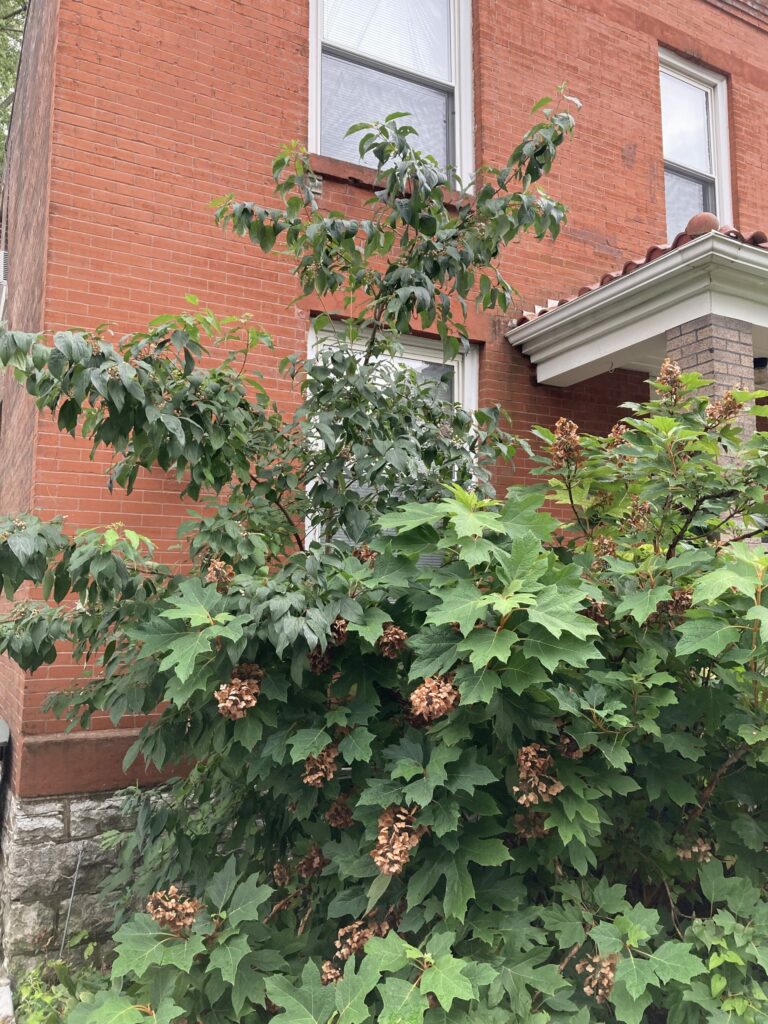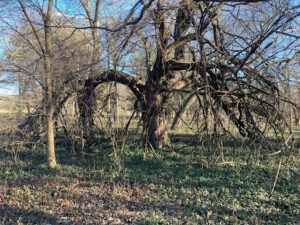By: Mark Halpin, Forestry Manager
Cornus racemosa, grey dogwood, is normally seen as a thicket-forming shrub inhabiting flat, low-lying and even swampy areas throughout the northern and central Midwest all the way to the East Coast. Like every native dogwood that isn’t Cornus florida, the illustrious flowering dogwood, it is generally ignored for all applications other than natural area restoration. Certainly its flowers aren’t as breathtaking as the bracts of C. florida (few are!), but it’s a tree that deserves more attention nonetheless.
Perhaps the single greatest obstacle to the increased use of many native plants, beyond simple lack of availability in the nursery trade, is a matter of perception; people have grown accustomed to certain looks and also certain maintenance tasks and are uncomfortable venturing outside of that safety zone. Grey dogwood is the perfect illustration of a potentially fantastic landscape tree hiding in plain sight, just beyond that zone. A hardy, drought tolerant, fast growing flowering tree that only reaches 25 feet tall at most (making it a safe bet under power lines), is tolerant of poorly draining urban soils, and is beneficial for pollinators and birds – what’s not to like?
The flowers on grey dogwood are quite lovely – racemes, composed of many small white flowers forming a flattish-topped cluster similar to those of the hawthorns, blooming in late May to early June. The flowers give way to white berries that provide excellent autumn forage for birds. New stems are red and make for fine winter interest – when kept in shrub form, cutting old stems out promotes these red shoots. Some people familiar with this plant may find it odd to think of it as anything but a shrub, but with proper pruning, grey dogwood indeed can easily form a single stem tree, quite similar to flowering dogwood in form.
But here is where that safety zone comes into play yet again: this will require some pruning. Branches on the lower trunk will need to be removed, an easy task accomplished with hand pruners given the tree’s small size. Root suckers will also need to be trimmed diligently to prevent the tree from forming a thicket – but anyone who has managed crabapples or flowering cherries will surely know that these famous ornamentals too require constant sucker removal. Grey dogwood will perform well in full sun or deep shade, and is untroubled by the menagerie of pests and diseases that plague many of our well known ornamentals. A native tree of understated elegance, Cornus racemosa can serve many of the landscape needs we so desperately need fulfilled right now, if only we can shift our perceptions and attitudes just a little bit.
Planted in May 2017 as an 18” seedling and growing in almost full shade on the north side of a house, this grey dogwood is now a lovely single-stem tree almost 15’ in height, with only minutes worth of pruning performed in its four years of life. Bloom time coincides perfectly with the oakleaf hydrangea in front.




